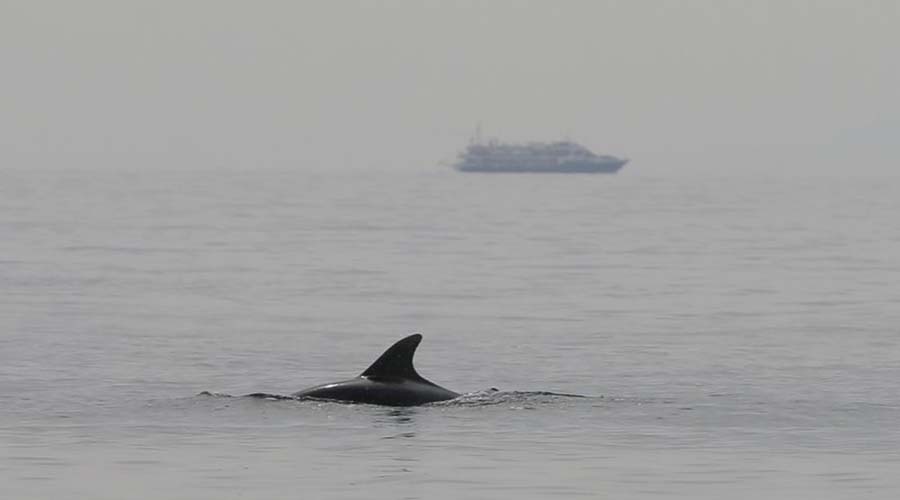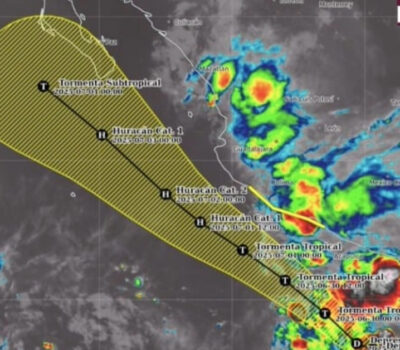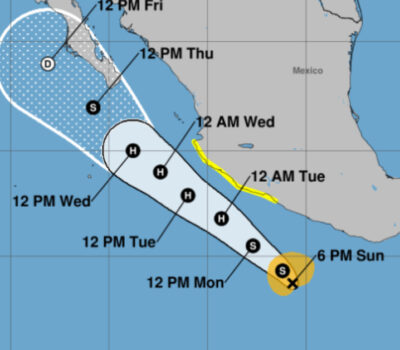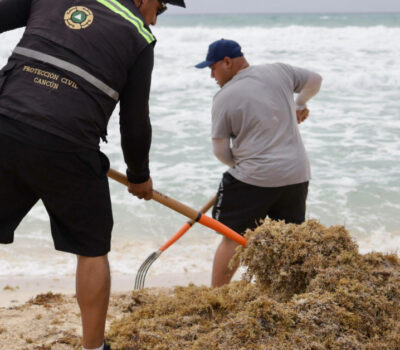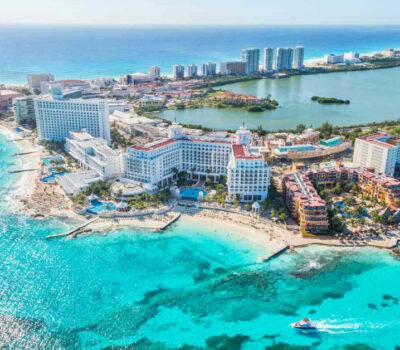There are ghosts in the ocean. Silent killers carried by the currents, wrapping themselves around reefs and claiming the lives of millions of marine creatures great and small, from sponges and tiny crustaceans to dolphins, sharks, and whales.
In their former lives, these ghosts were nets and other fishing gear essential to the livelihoods of millions around the world and put food on the plates of millions more. But once lost, abandoned or discarded into the sea, these nets continue doing what they were designed to do: catch fish.
Mostly made of strong plastic such as nylon, this lost gear known as ghost nets doesn’t easily decompose.
“They can remain there for hundreds of years and continue fishing,” said Maria Salomidi, an environmental researcher at the Hellenic Centre for Marine Research. The trapped fish quickly become bait, attracting larger predators who in turn become entangled themselves.
“And so starts a vicious cycle which … can kill anything from small crustaceans such as crabs and lobsters to large fish, turtles, seals, dolphins,” Salomidi added.
This isn’t the only damage the discarded nets cause. When they snag on rocks or coral, they can destroy entire underwater habitats.
“A rock in the sea isn’t just a rock,” Salomidi said. “A rock is full of life, it harbors many organisms. These organisms are injured and die under a net that has been caught on the rock.”
Whole reefs can quickly turn into barren wastelands.
An estimated 10 percent of all marine litter in the world’s oceans and seas, or some 640,000 tons, is made up of lost or abandoned fishing gear, according to a 2009 report by the U.N. Food and Agriculture Organization and the U.N. Environment Program, while the deaths they cause contribute to the decline of fish stocks.
A group of volunteer divers aimed to disrupt this cycle of destruction when they plunged recently into the depths off the coast of the Greek island of Poros in the Saronic Gulf to recover some of these ghost nets.
“It is a common secret — it’s mainly fishermen who about know it — that the bottom of the sea is full of abandoned nets,” said George Sarelakos of Aegean Rebreath, a group of volunteer mainly recreational divers that carry out underwater cleanups and raises awareness about marine pollution.
Descending through schools of fish, a pair of dolphins splashing overhead, the massive net came into view. It lay strewn across a seabed at a depth of 28 meters (92 feet), blanketing the rocky bottom and crushing sponges, anemones and other delicate sea life.
It took six divers about half an hour and four lift bags — inverted bags that can be filled with air from divers’ tanks — to dislodge the net and bring it to the surface. Weighing an estimated 400 kilograms (882 pounds) and originating from a nearby fish farm, there was no telling how long the ghost net had been there.
The previous day, the team had recovered another hefty ghost net from shallow waters in the island’s port and managed to cut free at least one struggling fish and several crustaceans.
“The problem is extensive,” Sarelakos said. “In this two-day activity we carried out, the nets we collected covered entire surfaces on reefs. It’s not by chance that we found many live creatures trapped in these nets.”
Apart from divers and marine researchers, few people ever see this scourge of the world’s marine environment. But the problem is extensive.
“Oceanic currents and winds can carry ghost fishing gear thousands of kilometers,” said Veronika Mikos, project coordinator of Healthy Seas, a European initiative focusing on removing abandoned fishing gear and other marine litter. “Even remote Antarctic habitats are not free from this pollution. Every ocean and sea on Earth is affected.”
Healthy Seas was organizing a ghost net cleanup operation along with divers off the Greek island of Santorini on Friday, World Oceans Day.
Lost nets can also be a financial nightmare for those who make their living from the sea.
“It causes a big problem for a fisherman. It can destroy him, depending on how many meters (of nets) he loses,” said Vangelis Roussos, a former professional fisherman on Poros who now runs a sea taxi.
Roussos said most ghost nets are lost by accident due to storms, currents or entanglement rather than deliberately discarded. Healthy seas, he added, are in the best interests of fishermen too.
“By cleaning up the sea, we have better fishing,” Roussos said.
Addressing the impact of ghost nets has become a top priority for many international environmental organizations — the U.N.’s food and agriculture agency is holding a fisheries meeting on the topic in July in Rome.
Numerous charities and environmental groups carry out ghost net cleanups, and some partner with companies that then recycle old fishing gear to make anything from clothing and swimwear to carpets, sunglasses and skateboards.
For Vassilis Tsiairis, a professional diver with Aegean Rebreath, raising awareness about the impact of ghost nets and marine pollution, in general, is crucial.
“It is very important to show people what there is (in the sea), to show people that the sea has ended up being a rubbish dump,” he said. “Because most people haven’t realized what we throw away into the sea, and how this all accumulates.”
____
Follow Becatoros at https://twitter.com/ElenaBec
There are ghosts in the ocean. Silent killers carried by the currents, wrapping themselves around reefs and claiming the lives of millions of marine creatures . . .

